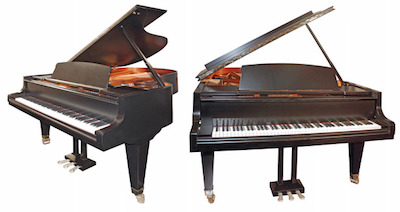When you invest in a piano, you understand quality is important. Notes must play to the best of their ability. The piano must be tuned for proper playing. Sound is important.
But what about the foot pedals on a piano? How important are they? Will a beginner use them anyway?
It’s easy to forget the foot pedals as you make your way through the checklist before you buy. Yet each were created for specific purposes.
The modern foot pedal configuration has been in use since the late nineteenth century with three foot pedals in place: sustain (damper pedal), sostenuto, and una corda (soft pedal).
The una corda was the first mechanism invented to modify the piano’s sound. This function is used by depressing the left pedal on modern pianos. The soft pedal modifies timbre and color of the tone, not just the volume.
The sustaining pedal is the right pedal on the modern piano. The pedal raises all the dampers off the strings so they keep vibrating after a key on the keyboard has been released. It allows the notes to resonate and mix together.
The sostenuto pedal allows pianists to sustain selected notes while keeping other notes unaffected.
With an acoustic piano, pedals are conveniently placed and attached to the frame located centrally underneath the piano. The framework attached to the grand piano often had a symbolic shape of a lyre, and it still carries the name “pedal lyre” today.
With a digital piano, pedals may or may not come standard with your setup. If you look at the back of your synthesizer or digital piano, you may notice input devices labeled “CTRL1 and CTRL2” or “SOSTENUTO” or “DAMPER”. These inputs are for the foot pedals and will enable you to change the timbre and expressiveness of the piano in much the same manner as on an acoustic piano.
If you are purchasing a used piano, it’s important to ensure the pedals function correctly, and provide you with the ability they were intended to perform. If not, it can signify problems with the piano.

